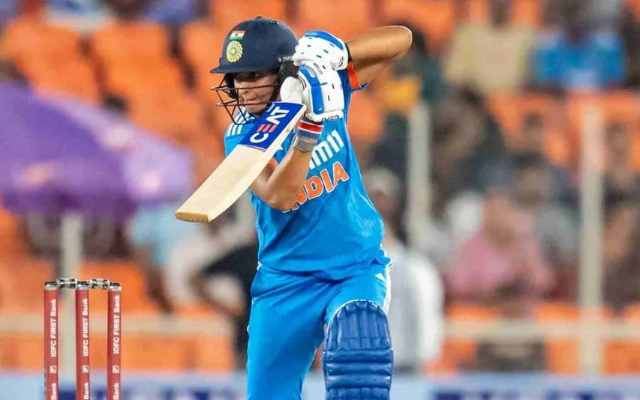
After a strong start to the series, India’s women’s cricket team suffered a heavy 76-run loss in the second ODI against New Zealand, while chasing a target of 260. With the series now tied, fans eagerly await today’s decider at Ahmedabad’s Narendra Modi Stadium. However, the persistent struggle in run chases has become a critical concern for this Indian team in the 50-over format.
In the past two years, India has won just one out of their last six ODIs while chasing, with four losses and a tie. Their last successful chase was against South Africa in June 2024 in Bengaluru, where they reached a target of 216 with ease. They have stumbled in chases against teams like Bangladesh, Australia (two matches) and New Zealand. Even on home turf, India’s record in run chases has been troubling, with two wins and three losses in their last five attempts.
With the upcoming 50-over World Cup set to be hosted in India, these stats are a cause for concern for the team management. One significant issue has been shot selection and consistency. For instance, Smriti Mandhana’s recent form has been disappointing. Following a poor T20 World Cup, her struggles have continued in this series. She has been dismissed in the same area in both ODIs, indicating a lack of foot movement and timing.
Similarly, Shafali Verma has been unable to convert starts into substantial scores, getting out after just 11 runs in the last game, where she hit two boundaries but lost her wicket in the Powerplay. Harmanpreet Kaur’s return in the second ODI brought some hope, as she looked steady with 24 runs. But her dismissal — an attempted boundary off a short ball by Sophie Devine — ended in a mistimed shot caught by Eden Carson.
For the Latest Sports News: Click Here

As India heads into the decider, they must address these concerns quickly. Improving shot selection and stabilising the batting order during chases will be crucial if they hope to turn things around.
Beyond shot selection, India has struggled to build big partnerships, particularly in the top order, leaving them unable to set a solid foundation for chasing targets. In several critical chases, this issue has been prominent. Against Bangladesh in 2023, India needed just 153 to win but crumbled for 113, losing five batters for 61 runs in 17 overs. Against Australia in Mumbai later that year, they had a promising start in their chase of 259 but, after losing their third wicket at 159 in the 33rd over, a collapse followed as they lost five more wickets for just 96 runs in the remaining overs, eventually falling short by three runs.
A similar scenario unfolded in early 2024 at the same stadium when India faced a daunting target of 339 against Australia. They could only manage 148 in 32.4 overs, with their highest partnership being a meagre 32-run opening stand. The recent game against New Zealand followed the same pattern, with India losing eight wickets for 108 runs in just 27 overs. These collapses have raised concerns among fans and similar issues arose during the recent T20 World Cup in the UAE. While India managed to chase down 106 against Pakistan, it took them 18.5 overs, leaving fans questioning their approach and intent. In that mega event, they failed to chase down against the White Ferns and Southern Stars.
Today’s series decider offers an opportunity for India to reset their approach and show more resilience if asked to chase a target. Fans hope to see stronger partnerships, smarter shot selection and an improved intent from the players. With the 50-over World Cup on home soil in focus, the pressure is on India to fix these recurring issues before time runs out.
Also Read: New Zealand roll over India in second ODI




